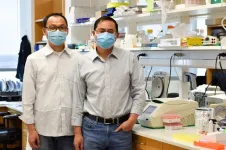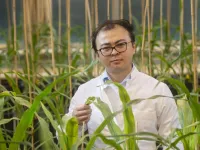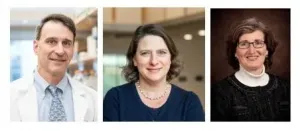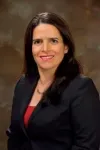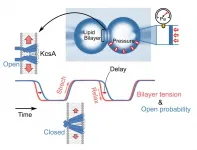New discovery uncovers secret switch that could revolutionise heart attack treatment
Scientists at the Victor Chang Cardiac Research Institute have discovered a critical new gene that it is hoped could help human hearts repair damaged heart muscle after a heart attack
2021-04-08
(Press-News.org) Scientists at the Victor Chang Cardiac Research Institute in Sydney have discovered a critical new gene that it is hoped could help human hearts repair damaged heart muscle after a heart attack.
Researchers have identified a genetic switch in zebrafish that turns on cells allowing them to divide and multiply after a heart attack, resulting in the complete regeneration and healing of damaged heart muscle in these fish.
It's already known that zebrafish can heal their own hearts, but how they performed this incredible feat remained unknown, until now. In research recently published in the prestigious journal, Science, the team at the Institute drilled down into a critical gene known as Klf1 that previously had only been identified in red blood cells. For the first time they discovered it plays a vital role in healing damaged hearts.
Dr Kazu Kikuchi, who led this world first research, said he was astonished by the findings.
"Our research has identified a secret switch that allows heart muscle cells to divide and multiply after the heart is injured. It kicks in when needed and turns off when the heart is fully healed. In humans where damaged and scarred heart muscle cannot replace itself, this could be a game-changer," Dr Kikuchi explains.
"With these tiny little fish sharing over 70% of human genes, this really has the potential to save many, many lives and lead to new drug developments."
The gene works by making remaining uninjured heart muscle cells more immature and changing their metabolic wiring. This allows them to divide and make new cells.
When the gene was removed, the zebrafish heart lost its ability to repair itself after an injury such as a heart attack, which pinpointed it as a crucial self-healing tool.
Professor Bob Graham, Head of the Institute's Molecular Cardiology and Biophysics Division, says they hope to utilise this world-first discovery, made in collaboration with the Garvan Institute of Medical Research, to transform the treatment of heart attack patients and other heart diseases.
"The team has been able to find this vitally important protein that swings into action after an event like a heart attack and supercharges the cells to heal damaged heart muscle. It's an incredible discovery," says Prof Graham.
"The gene may also act as a switch in human hearts. We are now hoping further research into its function may provide us with a clue to turn on regeneration in human hearts, to improve their ability to pump blood around the body."
Importantly, the team also found that the Klf1 gene played no role in the early development of the heart and that its regenerative properties were only switched on after a heart injury.
Professor Graham added: "This is clear evidence that the regeneration you get after a heart injury is not the same as what happens during the development of the heart but involves an entirely different pathway; an issue that has been debated for years."
INFORMATION:
Note to journalists
After eight fruitful years, Dr Kikuchi left the Australian based Institute in 2019 to continue his work back in his homeland, Japan. But he continues to work closely with the Victor Chang Cardiac Research Institute to jointly advance the zebrafish heart project to the next phase.
[Attachments] See images for this press release:
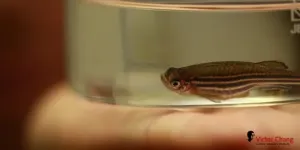
ELSE PRESS RELEASES FROM THIS DATE:
2021-04-08
Modern humans are fundamentally different from our closest living relatives, the great apes: We live on the ground, walk on two legs and have much larger brains. The first populations of the genus Homo emerged in Africa about 2.5 million years ago. They already walked upright, but their brains were only about half the size of today's humans. These earliest Homo populations in Africa had primitive ape-like brains - just like their extinct ancestors, the australopithecines. So when and where did the typical human brain evolve?
CT comparisons of skulls reveal modern brain structures
An international ...
2021-04-08
Researchers have developed a new algorithm capable of identifying features of male zebra finch songs that may underlie the distinction between a short phrase sung during courtship, and the same phrase sung in a non-courtship context. Sarah Woolley of McGill University in Montreal, Canada, and colleagues present these findings in the open-access journal PLOS Computational Biology.
Like many animals, male zebra finches adjust their vocal signals for their audience. They may sing the same sequence of syllables during courtship interactions with females as ...
2021-04-08
DALLAS - April 8, 2021 - New research has uncovered a surprising role for so-called "jumping" genes that are a source of genetic mutations responsible for a number of human diseases. In the new study from Children's Medical Center Research Institute at UT Southwestern (CRI), scientists made the unexpected discovery that these DNA sequences, also known as transposons, can protect against certain blood cancers.
These findings, published in Nature Genetics, led scientists to identify a new biomarker that could help predict how patients will respond to cancer therapies and find new therapeutic targets for acute myeloid leukemia (AML), the deadliest type of blood cancer in adults and children.
Transposons ...
2021-04-08
Every third-grader knows that plants absorb nutrients from the soil through their roots. The fact that they also release substances into the soil is probably less well known. And this seems to make the lives of plants a lot easier.
That is at least the conclusion of the current study. The participating researchers studied several maize varieties that differ significantly in their yield. In their search for the cause, they came across an enzyme, flavone synthase 2. "The high-yield inbred line 787 we studied contains large amounts of this enzyme in its roots", explains Dr. Peng Yu ...
2021-04-08
A global science collaboration using data from NASA's Neutron star Interior Composition Explorer (NICER) telescope on the International Space Station has discovered X-ray surges accompanying radio bursts from the pulsar in the Crab Nebula. The finding shows that these bursts, called giant radio pulses, release far more energy than previously suspected.
A pulsar is a type of rapidly spinning neutron star, the crushed, city-sized core of a star that exploded as a supernova. A young, isolated neutron star can spin dozens of times each second, and its whirling magnetic ...
2021-04-08
SALT LAKE CITY - A letter published today by Huntsman Cancer Institute (HCI) at the University of Utah (U of U) in the New England Journal of Medicine reports that melanoma mortality among Utahns outpaced that of the rest of the United States during the period from 1975 to 2013. Melanoma death rates have been decreasing in recent years both in Utah and the United States, a trend likely attributable to new, more effective treatments, like immunotherapy. However, melanoma remains the deadliest type of skin cancer, and the incidence of melanoma diagnoses in Utahns is higher than in any other ...
2021-04-08
LOS ALAMOS, N.M., April 8, 2021-While attention has been focused on the Perseverance rover that landed on Mars last month, its predecessor Curiosity continues to explore the base of Mount Sharp on the red planet and is still making discoveries. Research published today in the journal Geology shows that Mars had drier and wetter eras before drying up completely about 3 billion years ago.
"A primary goal of the Curiosity mission was to study the transition between the habitable environment of the past, to the dry and cold climate that Mars has now. These rock layers recorded that change in great detail," said Roger Wiens, a coauthor on the paper and scientist at Los Alamos National Laboratory, ...
2021-04-08
PHILADELPHIA (April 8, 2021) - Many factors, including need, affect healthcare use. Strategies geared to enhancing the provision and access to healthcare must consider the various mechanisms that contribute to healthcare need and use. Until now, the mechanism of violence and its impact on both health and healthcare use has not been investigated.
A new study from the University of Pennsylvania School of Nursing (Penn Nursing) is one of the first to examine the association between violence exposure and healthcare service utilization in Mexico. Results are published in the International Journal of Health Equity.
Widespread violence in Mexico can impact health through various channels. The study ...
2021-04-08
When it comes to choosing a partner, humans tend to be attracted by characteristics like personality and common interests. In contrast, insects tend to be a bit shallow, as they choose a mate based on appearance, and in some cases, smells. One example is the leaf beetle, which produces chemical pheromones that are on their cuticles, or the exterior surface of the beetle. They use these 'scents' to assess beetle sex and mating status (whether beetles are sexually mature or not).
Kari Segraves, professor of biology in the College of Arts and Sciences, is interested in researching the chemical and visual signals that contribute to mate selection by these beetles. This work is part of a larger project focused on understanding how new species are formed. By definition, species are related ...
2021-04-08
Ion channels play an indispensable role in cellular physiology, and understanding the physical features that affect ion channel functions is a matter of considerable interest to biologists. Given that mechanosensitivity is an intrinsic feature of cells, the complex set of mechanical stresses acting on a cell at any time represents an important consideration in the field of cellular physiology. In fact, stretching forces created by mechanical stress are sometimes necessary to activate ion channels. As Professor Masayuki Iwamoto and Professor Shigetoshi Oiki of the University of Fukui ...
LAST 30 PRESS RELEASES:
[Press-News.org] New discovery uncovers secret switch that could revolutionise heart attack treatment
Scientists at the Victor Chang Cardiac Research Institute have discovered a critical new gene that it is hoped could help human hearts repair damaged heart muscle after a heart attack


